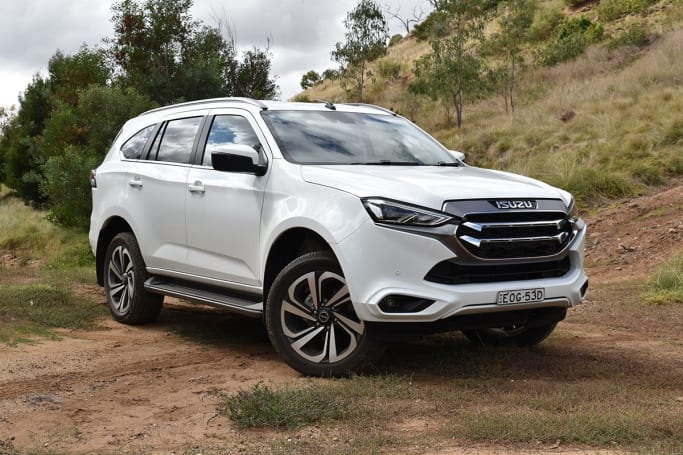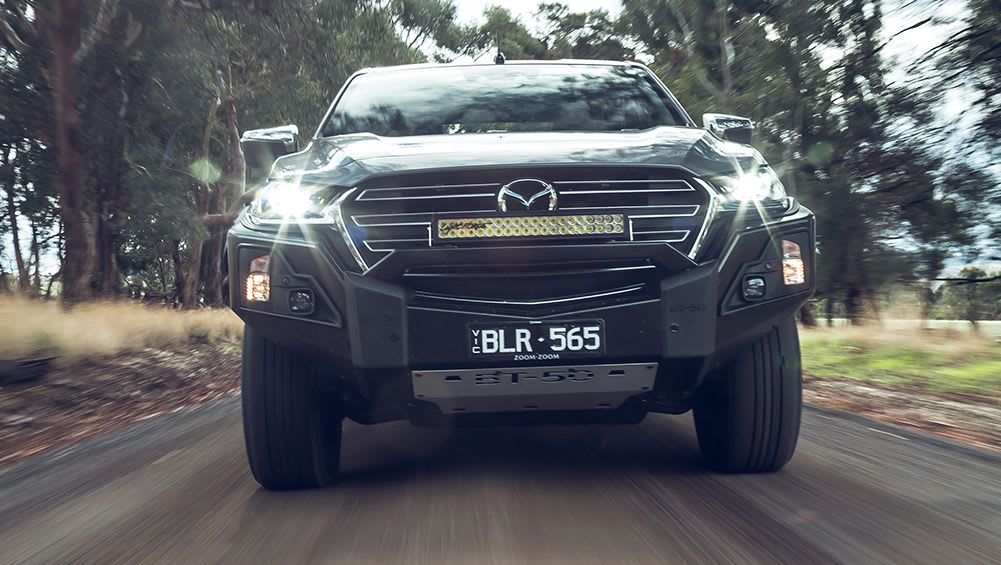[ad_1]
One of the more vexing mysteries in the Australian motoring industry is why Isuzu builds the D-Max-based BT-50 for Mazda, but no MU-X version.
It’s not as if Mazda is not aware that the market for large ladder-frame chassis wagons is huge and growing, especially as Australia’s third largest-selling SUV after the Toyota RAV4 and Mazda CX-5 is the Toyota Prado – an MU-X competitor.
However, according to Mazda Australia marketing director, Alastair Doak, having a comparatively old-fashioned body-on-frame wagon sitting alongside the technically advanced CX-8 and CX-9 SUVs may send the wrong message out to consumers, especially as the company shifts up a gear with their more sophisticated CX-80 and CX-90 replacements that are due out in the near future.
Read more about the Mazda BT-50
“That market is not something we are chasing,” he told CarsGuide in Melbourne earlier this month. “It’s not where our brand is, we are comfortable where we are.”
“We always look at everything, and we did actually look at (a BT-50-based SUV wagon) in the past; not recently, but we did, and we said it’s probably not for us. And we haven’t really changed our opinion since.”
Whether that feasibility study from the past was to have been a version of the Ford Australia-developed Everest, during the era when the just-superseded T6 Ranger was the basis of the previous BT-50 from 2011 to 2020, is unclear, but perhaps likely, given that a design and engineering team from Mazda in Japan helped shape the project at that time.
Mr Doak added that, beyond Australia, research into the segment showed that there would not be enough volume from other markets around the globe to justify the investment, especially right-hand drive ones.
“What would be a successful number for a car like that for us?” he asked.

“Five hundred units per month? Who else would take it? You just can’t justify the numbers, it doesn’t really make sense. But even then, if it had been something that you thought: ‘Wow, that’s right on bullseye for our brand and it’s something that our customer base is really asking for’, then obviously you’d be pushing the cause, but it isn’t. It just doesn’t really even get past that first gateway of ‘let’s progress this further and try and get some interest happening’.”
By Mr Doak’s calculations, a BT-50-based wagon would only net around 6000 sales annually. Against last year’s results for other ladder-frame chassis SUVs, that figure would put it well behind the Prado (21,299), MU-X (10,618), Everest (8359) and Mitsubishi’s Pajero Sport (6804), supporting his assertion that there isn’t enough volume to make the exercise economically viable.
Ultimately, with two seven-seat SUVs in the market already, it seems Mazda Australia will stick to Isuzu-based utes only for now.

“We have a lot of SUVs as people keep reminding us, so, in theory, they can satisfy that,” Mr Doak said. “And we’ve improved the off-road ability of those models, and we will continue to do that. We’ve got off-road suspension, and in the CX-60, we have different traction settings and so on.
“Obviously we’re buying our tech and our car from Isuzu, and have a good relationship with them, and they sell that truck in Europe and elsewhere… and if we want to keep selling in the ute market then obviously you will have to adapt to the conditions.”
It’s not as if the brand has not been down this path before.

In the early 1990s, Mazda imported an evaluation example of the Proceed Marvie, a five-seater wagon version of the B-Series ute (1985-1999), developed during the height of the Toyota HiLux-based 4Runner’s popularity.
Australian management back then decided against it, but Ford brought in the nearly-identical Raider (ironically built by Mazda in Japan and part of the Courier family of light utes that the two firms collaborated on from 1972 to 2020) for five years from 1991, with limited success.
Tellingly, the Raider’s replacement – the conceptually similar Ford Explorer SUV imported from North America and ironically with the US-only Ranger origins – also failed to find an Australian audience, and was phased out when the Falcon-based Territory launched in 2004.
[ad_2]
Source link
